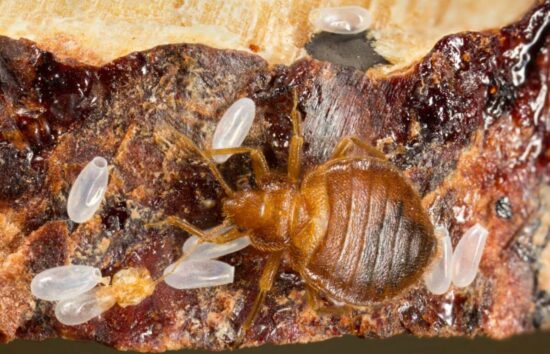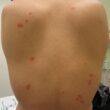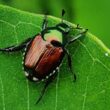Finding bed bugs in your home is every homeowner’s nightmare. These tiny pests multiply quickly, and their eggs are especially tough to eliminate. When you’re desperate for a solution, you might wonder if something as simple as rubbing alcohol could solve your bed bug problem.
The internet is full of advice about using rubbing alcohol to kill bed bug eggs, but does it actually work? The short answer is yes, but there’s a lot more to the story. Before you start spraying alcohol around your bedroom, you need to understand both the potential benefits and serious risks of this approach.
The Quick Answer: Does Rubbing Alcohol Kill Bed Bug Eggs?
Yes, rubbing alcohol can kill bed bug eggs, but only under very specific conditions. Here’s what the science actually shows about using rubbing alcohol to kill bed bug eggs.
Studies from Rutgers University found that 91% isopropyl alcohol has about an 80% success rate against bed bug eggs. However, this only works when the alcohol makes direct contact with each individual egg and requires multiple treatments over seven days.
- Kill bed bugs and bed bug eggs
- Use spray as a spot treatment around bed frames, mattress seams/tufts/folds, and baseboards
- Kills even the toughest bed bugs
- The continuous spray Comfort Wand easily gets into hard-to-reach areas
The bigger problem is that bed bug eggs are incredibly hard to find and reach. They’re smaller than a pinhead and hidden deep in mattress seams, furniture cracks, and wall crevices. Even if you spray alcohol everywhere, you’ll likely miss many eggs that will hatch later and restart your infestation.
Most importantly, using rubbing alcohol to kill bed bug eggs creates serious safety risks. Alcohol is extremely flammable, and several house fires have been caused by people trying this method. The minimal effectiveness simply doesn’t justify the danger.
Understanding Bed Bug Eggs and Why They’re So Hard to Kill
Before diving into alcohol treatments, it helps to understand what you’re actually fighting against. Bed bug eggs have evolved to survive, and they’re much tougher than you might expect.
What Bed Bug Eggs Look Like and Where They Hide
Bed bug eggs are tiny, about the size of a pinhead, and white or clear in color. They look similar to a grain of uncooked rice but much smaller. Female bed bugs can lay up to 500 eggs during their lifetime, usually placing them in clusters of 5 to 7 eggs at a time.
These eggs aren’t randomly scattered around your room. Bed bugs are strategic about where they place their offspring. They prefer dark, protected areas within 20 feet of where people sleep. Common hiding spots include mattress seams, bed frame cracks, behind headboards, along baseboards, and inside electrical outlets.
The Protective Shell That Makes Eggs Resistant
Bed bug eggs have a tough outer shell called a chorion. This protective layer is made of proteins and helps shield the developing bug inside from threats like chemicals, temperature changes, and moisture loss. The chorion is one reason why using rubbing alcohol to kill bed bug eggs is so challenging.
When eggs are first laid, they’re also sticky and glue themselves firmly to surfaces. This makes them nearly impossible to remove with just vacuuming or wiping. The combination of their small size, hidden locations, and protective shell makes bed bug eggs one of the most difficult parts of an infestation to eliminate.
Why Missing Even a Few Eggs Restarts Your Problem
Bed bug eggs hatch in 6 to 10 days under normal room conditions. If your treatment misses even a small number of eggs, those baby bed bugs will emerge and begin feeding within days. Young bed bugs can start reproducing in as little as five weeks, meaning a few missed eggs can quickly turn back into a full infestation.
How Rubbing Alcohol Affects Bed Bug Eggs
Understanding exactly how alcohol works against bed bugs and their eggs helps explain why this method has such limited success. The science behind using rubbing alcohol to kill bed bug eggs reveals both its potential and its major limitations.
The Science Behind Alcohol as a Bed Bug Killer
Rubbing alcohol works in two ways against bed bugs and their eggs. First, it acts as a solvent, which means it can dissolve the waxy outer layers that protect insects. Second, it works as a desiccant, causing rapid dehydration by pulling moisture out of the bug or egg.
For bed bug eggs specifically, the alcohol needs to penetrate the protective chorion shell and dry out the developing embryo inside. This process requires direct contact and enough time for the alcohol to work before it evaporates.
Research Results: What Studies Actually Show
The most reliable research on using rubbing alcohol to kill bed bug eggs comes from Rutgers University. Their studies tested both 70% and 91% isopropyl alcohol against bed bugs and their eggs under controlled conditions.
The results were mixed at best. When researchers sprayed alcohol directly on bed bugs, only about 50% died even after four days. For eggs, 91% isopropyl alcohol showed an 80% mortality rate, but this required applying the treatment 21 times over seven days. Even with repeated applications, 20% of the eggs still survived and hatched normally.
Why Concentration Matters
Not all rubbing alcohol is the same when it comes to killing bed bug eggs. The two most common types are 70% and 91% isopropyl alcohol, and each has different strengths and weaknesses.
The 70% version contains more water, which means it evaporates more slowly. This gives it more time to work against bed bugs and eggs. However, the lower alcohol concentration makes it less effective overall.
The 91% version has less water and a higher concentration of alcohol, making it better at penetrating the protective egg shell. However, it evaporates much faster, reducing the contact time needed to kill eggs effectively.
- Kill bed bugs and bed bug eggs
- Use spray as a spot treatment around bed frames, mattress seams/tufts/folds, and baseboards
- Kills even the toughest bed bugs
- The continuous spray Comfort Wand easily gets into hard-to-reach areas
The Real Problems with Using Alcohol for Bed Bug Eggs
While the idea of using rubbing alcohol to kill bed bug eggs might seem simple and cost effective, the reality is much more complicated. Several major problems make this approach unreliable and potentially dangerous.
You Can’t Reach Most of the Eggs
The biggest challenge with using rubbing alcohol to kill bed bug eggs is actually getting the alcohol to touch each egg. Remember, bed bugs are experts at hiding in tiny spaces that are nearly impossible to access.
Eggs might be deep inside mattress seams, in screw holes of bed frames, behind loose wallpaper, or in electrical outlets. Even if you spray alcohol in these general areas, the liquid often can’t penetrate deep enough to reach the eggs. This means many eggs survive your treatment and will hatch within days.
Multiple Treatments Are Required
Even under perfect laboratory conditions, using rubbing alcohol to kill bed bug eggs requires multiple applications over several days. The Rutgers study that showed 80% effectiveness required 21 separate treatments over a week.
In real world conditions, you’d need to identify every single egg location and treat each spot multiple times. This level of thoroughness is nearly impossible for most homeowners, especially since bed bug eggs are so small and well hidden.
Alcohol Evaporates Too Quickly
One of alcohol’s biggest weaknesses as a bed bug treatment is how fast it evaporates. Once the alcohol dries, it has no remaining effect. This means bed bugs can return to treated areas safely just hours after application.
Unlike professional treatments that leave protective residues for weeks or months, alcohol only works while it’s wet. This short window of effectiveness makes it very difficult to catch all the eggs in an infestation.
Serious Safety Risks You Need to Know About
The safety concerns with using rubbing alcohol to kill bed bug eggs are serious enough that most pest control experts strongly recommend against this method. These risks go far beyond just ineffective treatment.
Fire Hazard Is the Biggest Concern
Rubbing alcohol is extremely flammable, and using large amounts on furniture and bedding creates a major fire risk. The alcohol vapors can ignite from sources you might not even think about, like pilot lights, electrical switches, or static electricity.
In 2017, a woman in Cincinnati tried using alcohol to kill bed bugs in her apartment. A nearby candle ignited the alcohol vapors, causing a fire that left 10 people homeless. Similar incidents have been reported across the country, with some resulting in serious injuries.
Even after the alcohol appears to dry, flammable vapors can linger in the air and on surfaces for hours. This extended fire risk isn’t worth the minimal benefits of using rubbing alcohol to kill bed bug eggs.
Health Problems from Inhaling Alcohol Vapors
Breathing in alcohol vapors can cause respiratory irritation, especially in enclosed spaces like bedrooms. Children, elderly people, and anyone with breathing problems are particularly vulnerable to these effects.
If you sleep on a mattress that’s been recently treated with alcohol, you might experience headaches, dizziness, or throat irritation throughout the night. Pets are also sensitive to alcohol vapors and can become sick from exposure.
Damage to Your Furniture and Belongings
Rubbing alcohol can damage many types of furniture finishes, fabrics, and materials. It might cause discoloration, staining, or deterioration of upholstery, especially on delicate materials like silk or leather.
The cost of replacing damaged furniture could easily exceed the cost of professional bed bug treatment. When you combine this risk with the low success rate of using rubbing alcohol to kill bed bug eggs, the approach becomes even less appealing.
Better Alternatives That Actually Work
Instead of risking your safety with alcohol treatments, several other methods are much more effective at eliminating bed bug eggs. These alternatives are safer and have higher success rates.
Heat Treatment: The Most Reliable Option
Heat is the most effective way to kill bed bug eggs because it penetrates into all the hiding spots that alcohol can’t reach. Professional heat treatment raises the temperature of entire rooms to 120-140°F, which kills bed bugs and eggs at every life stage.
For DIY heat treatment, you can use your washing machine and dryer on high heat settings. Wash infested bedding and clothing in water that’s at least 140°F, then dry on high heat for at least 90 minutes. This method has nearly 100% effectiveness against bed bug eggs.
Steam cleaning is another heat based option that works well for furniture and mattresses. A steam cleaner that reaches 212°F will kill bed bug eggs on contact and can penetrate into cracks and crevices where eggs hide.
Professional Chemical Treatments
Modern pest control uses specialized chemicals that are much more effective than using rubbing alcohol to kill bed bug eggs. Products like EcoRaider and Bed Bug Patrol have been tested and shown to kill over 90% of bed bugs and eggs on contact.
Professional exterminators also have access to treatments that leave protective residues. These chemicals continue killing bed bugs and newly hatched eggs for weeks after application, solving the problem of eggs that might have been missed during the initial treatment.
Diatomaceous Earth for Long Term Protection
Food grade diatomaceous earth is a natural powder that can help control bed bug populations over time. It works by damaging the outer shell of bed bugs and eggs, causing them to dehydrate and die.
While diatomaceous earth takes longer to work than chemical treatments (usually 7-17 days), it provides long lasting protection. You can apply a thin layer around bed frames, along baseboards, and in cracks where bed bugs travel. Unlike alcohol, it remains effective as long as it stays dry.
Simple Prevention Steps That Make a Difference
Prevention is always easier than elimination when it comes to bed bugs. These straightforward steps can help protect your home from future infestations without the risks of using rubbing alcohol to kill bed bug eggs.
Mattress and Box Spring Covers
Bed bug proof mattress encasements are one of the most effective prevention tools available. These covers completely seal your mattress and box spring, preventing bed bugs from getting in or out.
If you already have bed bugs, encasements trap them inside where they’ll eventually starve. For prevention, they create a smooth surface that’s easy to inspect and impossible for bed bugs to penetrate. Quality encasements should be left on for at least a year to ensure any trapped bugs have died.
Regular Inspection and Cleaning
Monthly inspections can catch bed bug problems before they become major infestations. Use a flashlight to check mattress seams, bed frame joints, and nearby furniture for signs of bugs or eggs.
Vacuum regularly around beds and furniture, paying special attention to cracks and crevices. Immediately dispose of vacuum bags or empty bagless containers into sealed plastic bags. Regular laundering of bedding in hot water also helps prevent bed bugs from establishing themselves.
Reducing Hiding Places
Bed bugs need places to hide during the day, so reducing clutter around sleeping areas makes your home less attractive to them. Keep clothing, books, and other items away from beds and in sealed containers when possible.
Seal cracks and gaps around baseboards, electrical outlets, and furniture with caulk. This eliminates hiding spots and forces bed bugs into the open where they’re easier to spot and treat.
When to Call in the Professionals
Sometimes the best decision is to skip DIY methods entirely and call professional exterminators. Knowing when you’ve reached this point can save time, money, and frustration.
Signs You Need Professional Help
If you’re finding bed bugs or eggs in multiple rooms, the infestation has likely spread beyond what DIY methods can handle. Professional treatment becomes essential when bed bugs have established themselves in several areas of your home.
Multiple failed treatment attempts are another clear sign that it’s time for professional help. If you’ve tried using rubbing alcohol to kill bed bug eggs or other DIY methods without success, continuing with the same approach will only waste more time and allow the infestation to grow.
Large numbers of bugs or extensive bite patterns on multiple family members also indicate a significant infestation that requires professional grade treatment methods.
What Professionals Can Do That You Can’t
Professional exterminators have access to treatment methods and detection tools that aren’t available to homeowners. Trained bed bug detection dogs can locate infestations with up to 90% accuracy, finding hidden bed bugs and eggs that human inspectors might miss.
Whole room heat treatment using industrial equipment can heat entire homes to lethal temperatures, ensuring that every bed bug and egg is eliminated regardless of hiding location. This comprehensive approach eliminates the guesswork involved in trying to treat each hiding spot individually.
Professional chemical treatments also use products that aren’t available to consumers. These chemicals are more effective than using rubbing alcohol to kill bed bug eggs and provide residual protection that continues working for weeks after application.
Cost Considerations
While professional treatment costs more upfront than DIY methods, it’s often more cost effective in the long run. Failed DIY treatments can allow infestations to grow, making eventual professional treatment more expensive and time consuming.
Factor in the cost of replacing furniture damaged by alcohol treatments, the time spent on multiple unsuccessful attempts, and the ongoing stress of dealing with bed bugs. Professional treatment often ends up being the more economical choice when you consider all these factors.
The Bottom Line on Alcohol and Bed Bug Eggs
After reviewing all the research and real world evidence, using rubbing alcohol to kill bed bug eggs is simply not a good strategy for most homeowners. While it can work under perfect laboratory conditions, the real world application is too limited and dangerous to recommend.
The 80% effectiveness rate might sound promising, but remember that this required 21 separate applications over a week under controlled conditions. In your home, with eggs hidden in countless tiny spaces, achieving this level of thoroughness is nearly impossible.
When you add in the serious fire risks, potential health problems, and likelihood of furniture damage, the minimal benefits don’t justify the costs and dangers. The families who have lost their homes to fires started by alcohol bed bug treatments would certainly agree.
Instead of risking your safety by using rubbing alcohol to kill bed bug eggs, focus on proven methods like heat treatment, professional grade chemicals, or integrated pest management approaches. These methods are safer, more effective, and more likely to solve your bed bug problem permanently.
If you’re dealing with a small, early stage infestation, start with heat treatment using your washer and dryer, steam cleaning, and diatomaceous earth. For larger infestations or if DIY methods aren’t working, professional treatment is worth the investment for your family’s safety and peace of mind.
Remember, effective bed bug control requires patience, thoroughness, and the right tools. Quick fixes that seem too good to be true usually are, and bed bug treatment is no exception to this rule.



